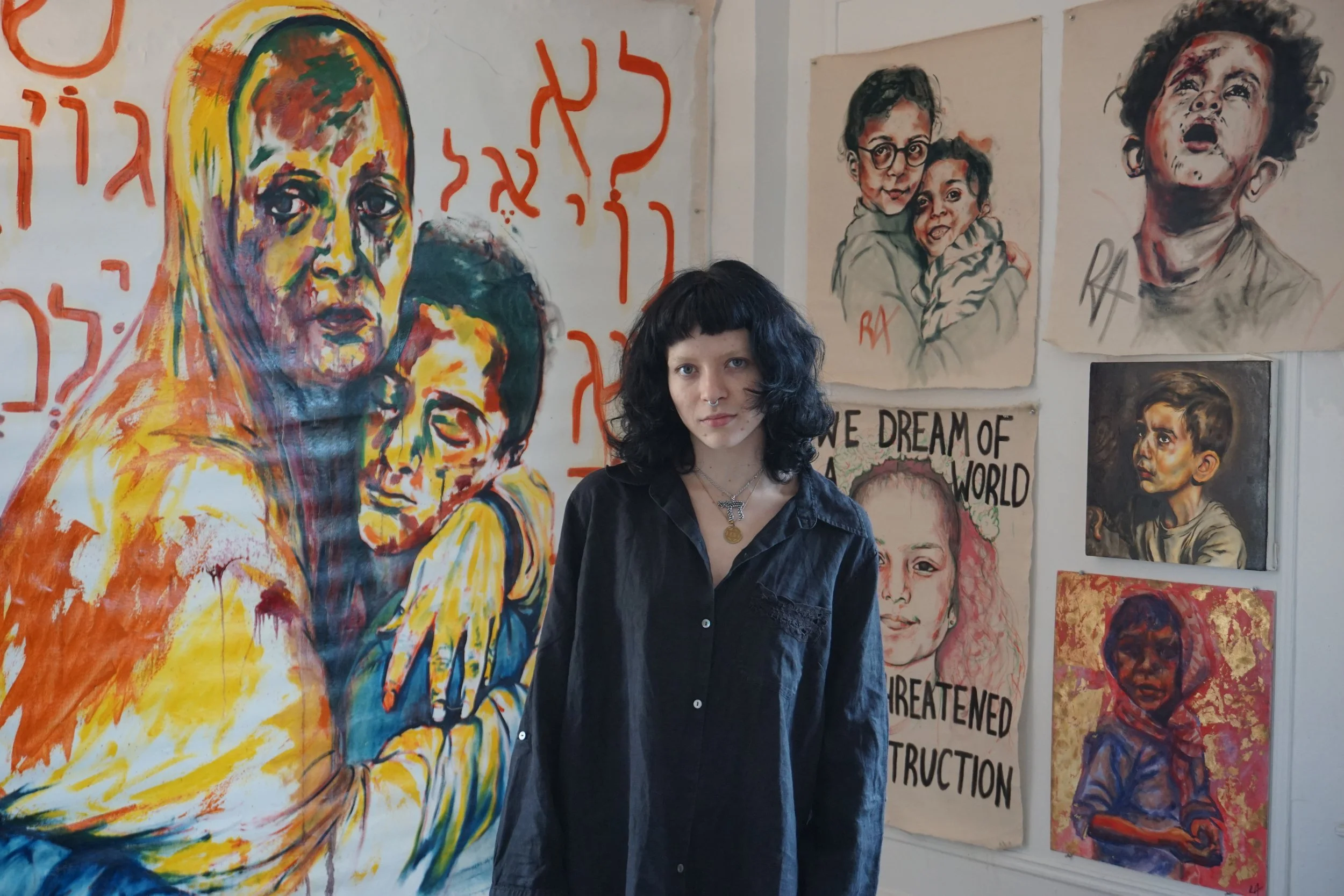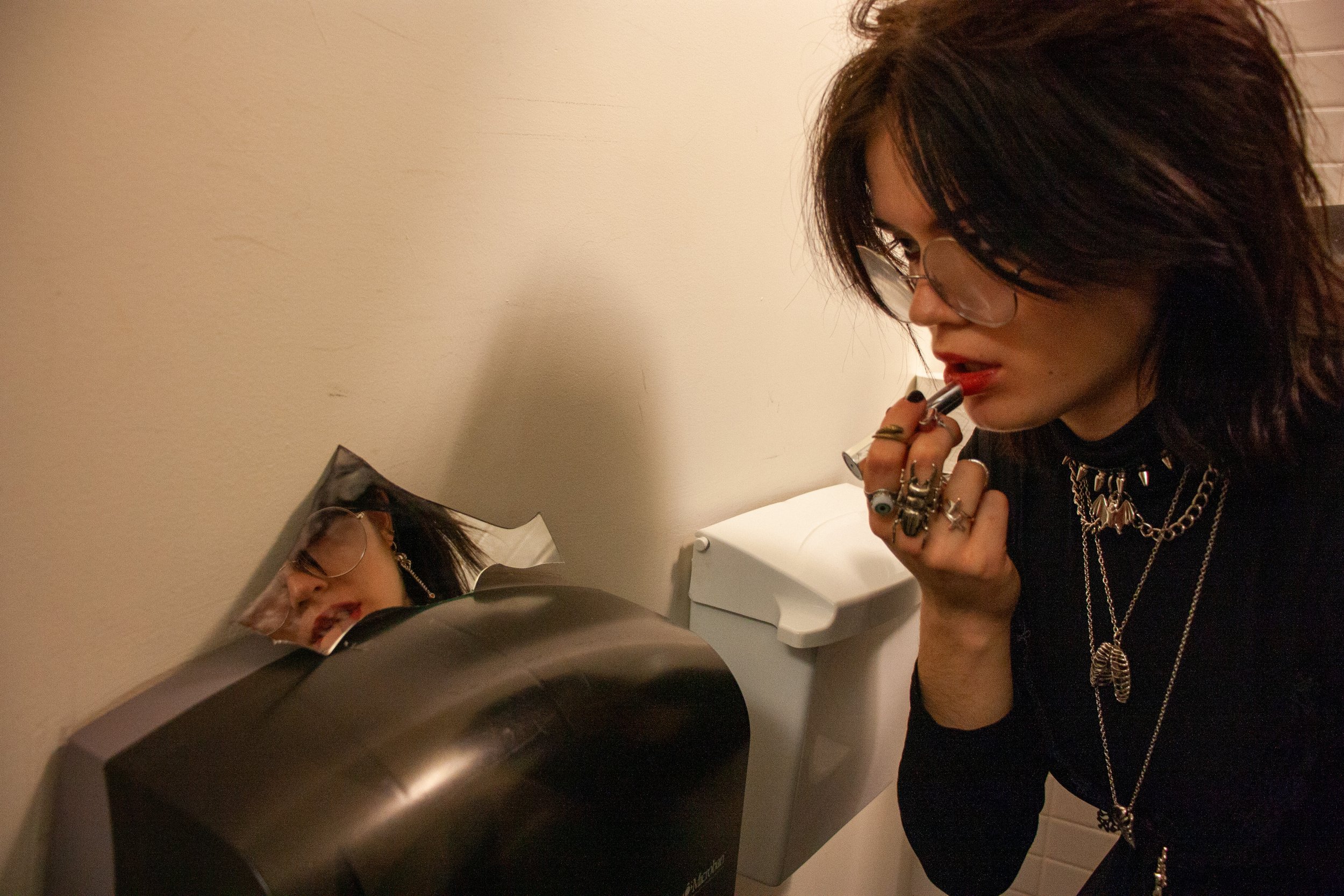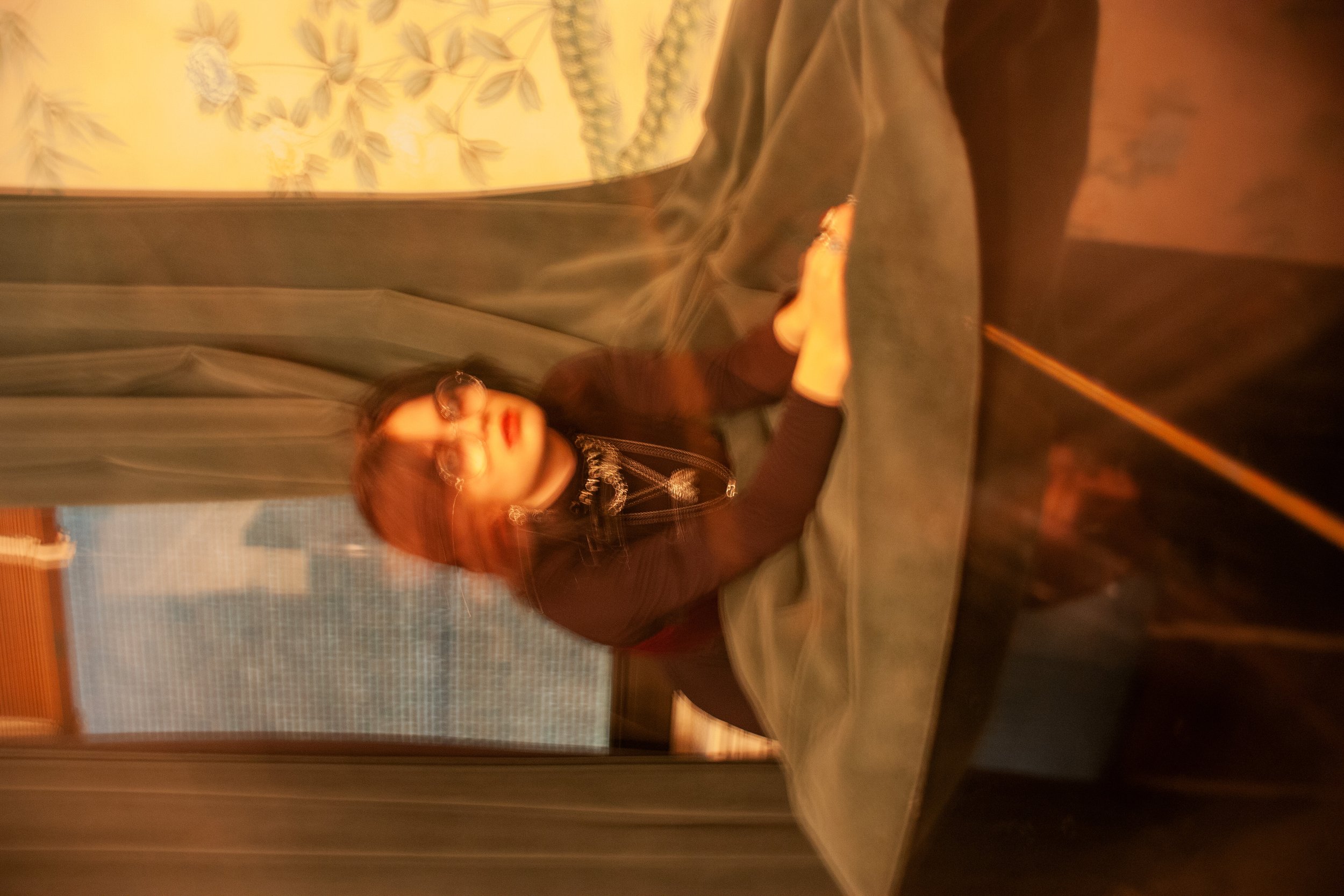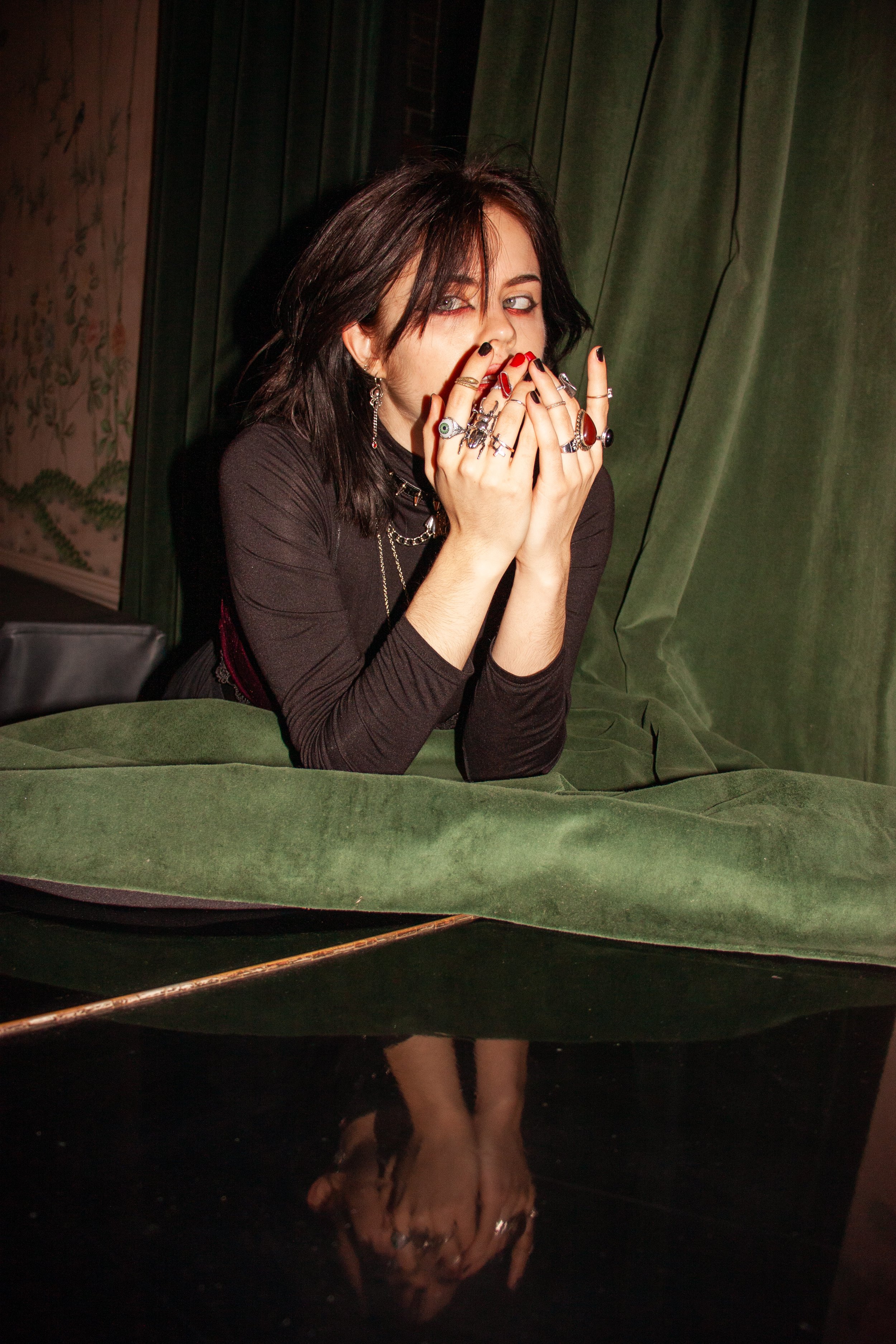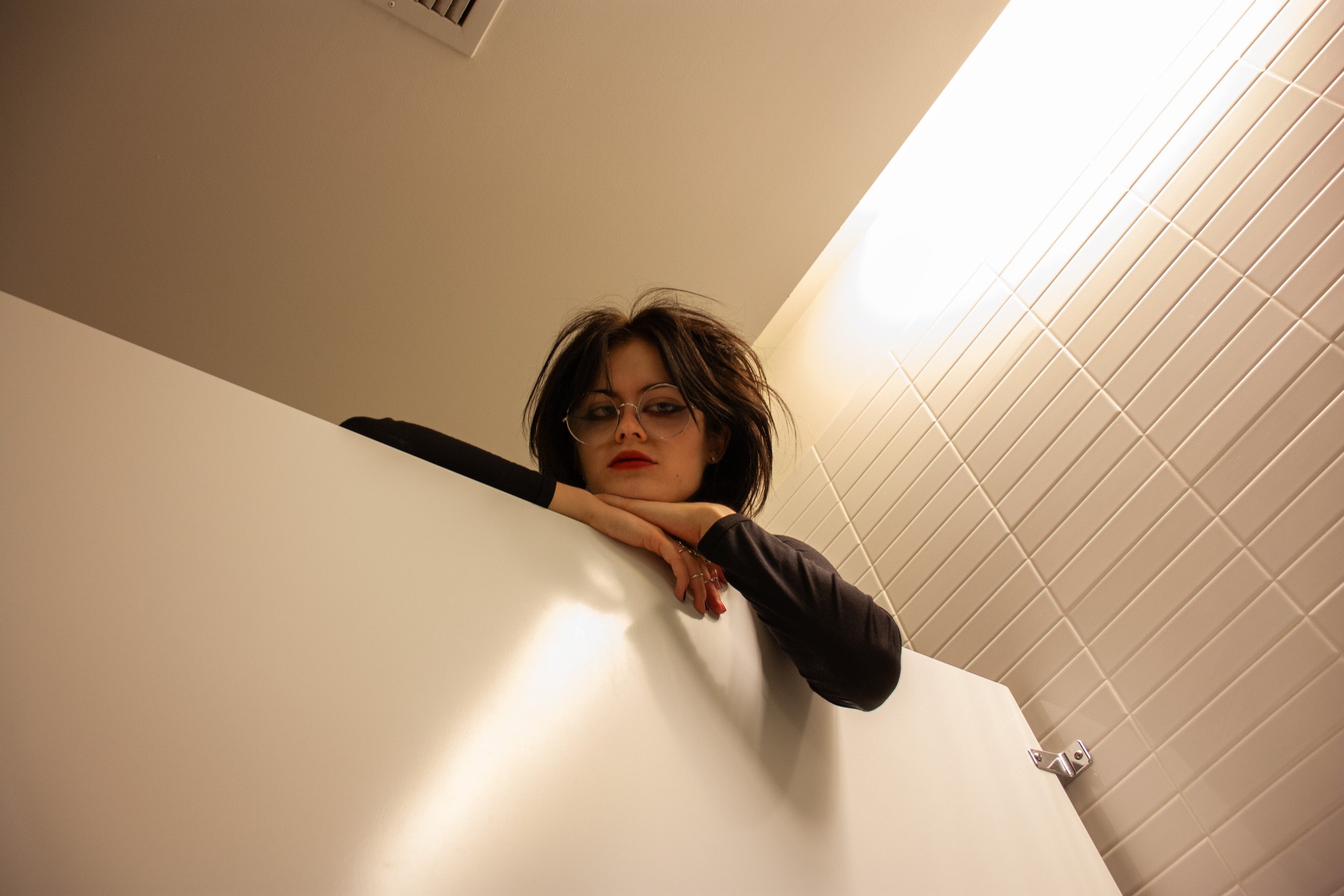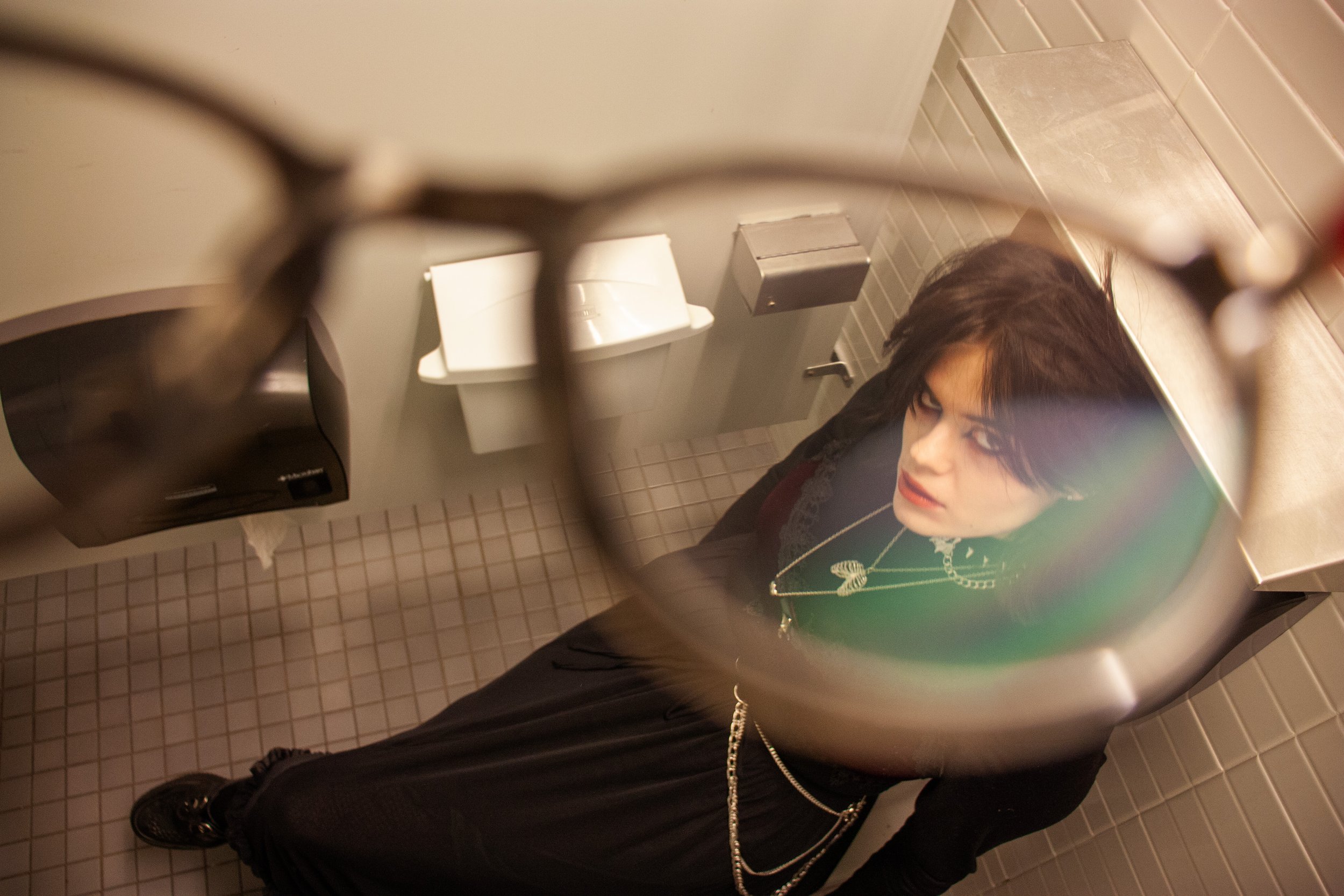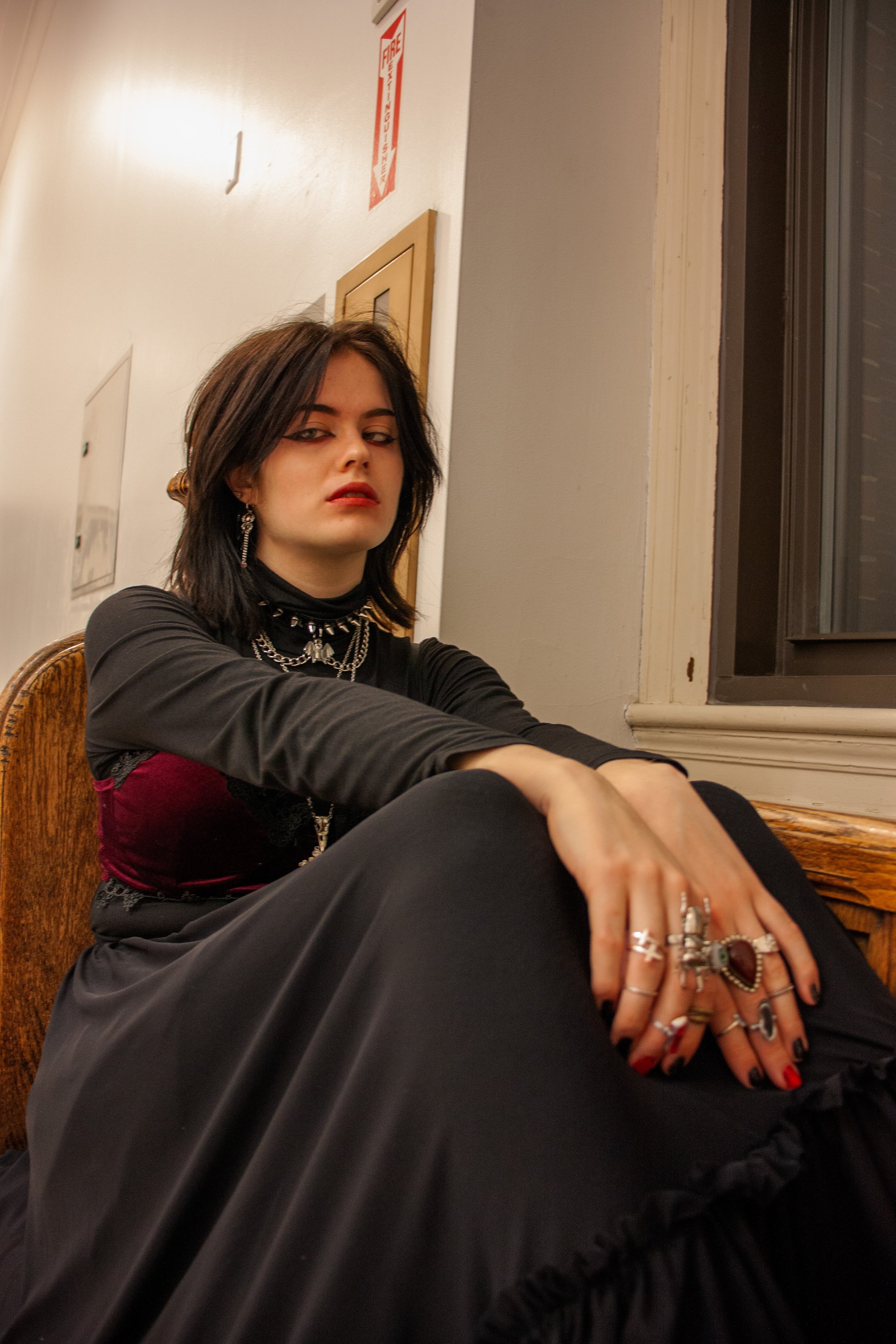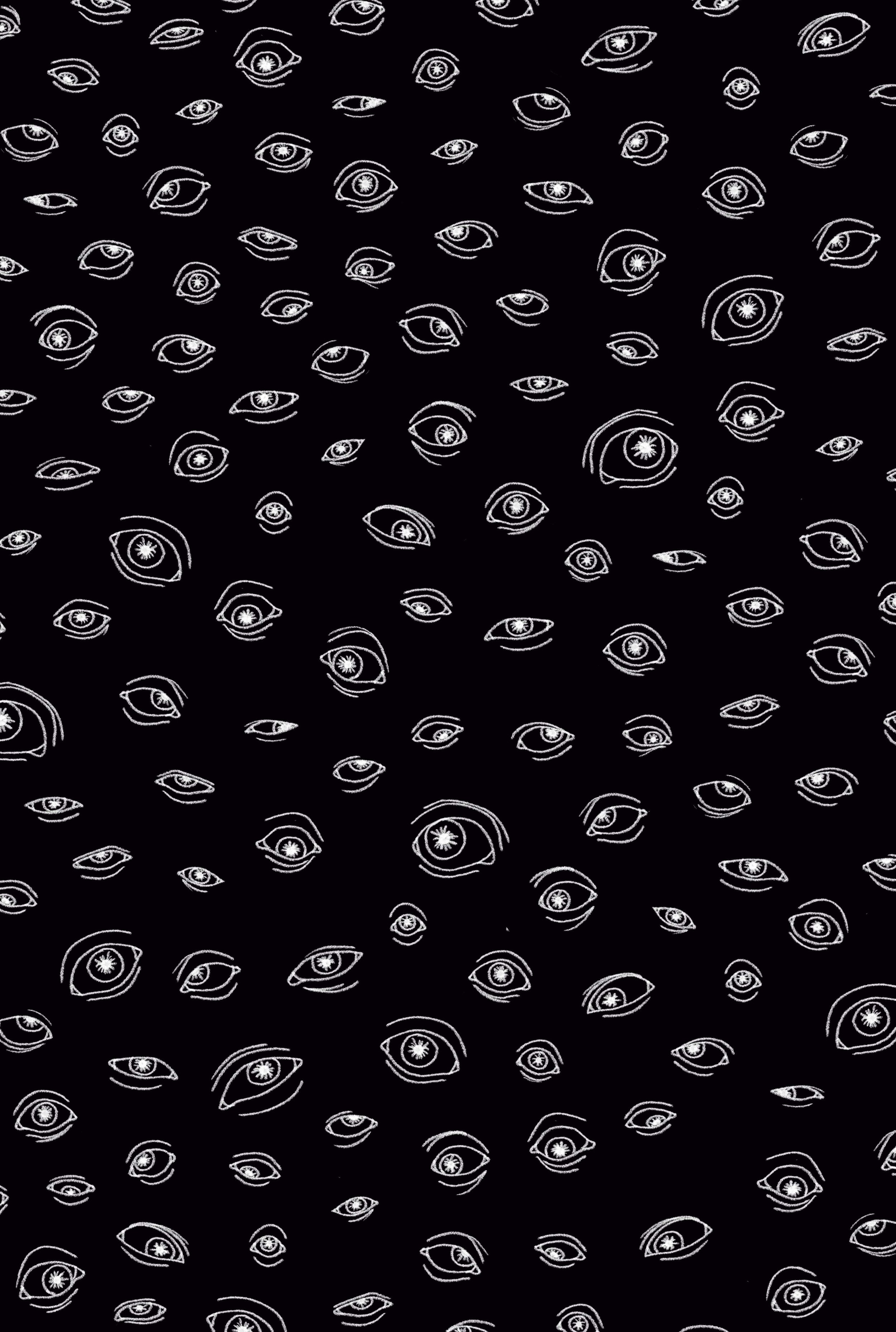Feature by Julia Tolda
Photos by Frances Cohen
It’s almost dusk when visual artist Sophie Johnson and I meet at Café Amrita. Inside, the speakers blast Spanish covers of 80s pop-hits, V for Vendetta plays on mute on the television, and customers waltz in and out through the French doors. But it is in this chaotic atmosphere that self-described goth-adjacent Sophie shines brightest. In our conversation, she discusses her inspirations, shares pieces directly from her art journal, and reclaims the term “weird”.
JULIA TOLDA: My first question is the most basic one: can you tell me about yourself?
SOPHIE JOHNSON: Oh man. Uh… I don't know what to say.
JT: I can give you more pointed questions if you’d like.
SJ: Sure, if you wouldn't mind.
JT: What school do you go to? When are you graduating? What's your major?
SJ: Barnard College. Class of 2025. Film studies major.
JT: Is there any particular concentration in film that interests you?
SJ: My dream is to become a screenwriter and a director. However, it's such a tough industry to break into that I have no idea. I just like telling stories, it's my favorite part of the whole thing.
Perception I
Perception II
JT: Where are you from?
SJ: Switzerland, the French-speaking part, near Geneva. Born and raised.
JT: How do you think growing up there has impacted your art?
SJ: The Swiss high school academic curriculum is very different from the American one. As part of it, we had to choose our own major, quote unquote. There's a lot of options, like math and physics, econ, biochem, Spanish or Italian... And of course there's art, which is what I took. The program was two-thirds studio art, and one third art history.
And as much as I hated the studio art class (so much!), it has impacted me a lot in terms of the mediums that I use. There was a lot of emphasis put on multimedia art, which forced me to get out of my comfort zone constantly. At first, I was kind of a purist (and still am)... But now I either go full in and mix everything, or I stick to one very specific medium.
Ombre
JT: What kind of mediums are you interested in? What kinds of mediums would you like to explore?
SJ: I mostly work with color pencils. But recently, I've been playing around with digital art, touching up a lot of the things that I do digitally. I'm trying to play around with the effects that that can give. I also make collages using random trinkets that I find. I recently did one with leaves. But I also use any scrap pieces of paper that I find… This is probably not the best thing to say, but I do draw all the time, including during lectures…
I would be thrilled to work with textiles, maybe incorporating it in collages. I'd also love to work with ceramics and to make sculptures, because I want to touch my own art all the time. While touching it is currently a bad idea, because I work with colored pencils, which can smudge, I feel like sculptures would be perfect for that! I additionally want to get more comfortable with digital art, because I think it allows for so many possibilities. But one thing I don't like about digital art is how polished it looks; it lacks the sketchiness, the messiness, the weird finger-shaped stains that I enjoy.
JT: In a couple sentences, how would you describe your art style?
SJ: Repetitive. A lot of repetitive motifs. A lot of the same color schemes. Focused on specific parts of the body. Not as a whole but, fragmented. I'm interested in perspective–how you look at the world, or how you look at art or how art looks at you.
JT: What motifs are ubiquitous in your work?
SJ: Eyes, for sure, all the time. I never grew out of doodling eyes in the corners of my notebooks. They always look slightly fucked up, crossed, or slightly off—weird.
JT: What are some of the perspectives that you embrace while making art?
SJ: I remember I was talking about my art with someone and she said “Oh, it makes me feel very protected”. And that's interesting because, to me, my art actually translates a sense of anxiety.
I don't like directing people's interpretations of my art. I do have an intention behind it, but so long as the bare bones are understood, I feel totally fine with people projecting meaning onto it—whether or not I intended it.
Another aspect that is important to me is storytelling. Some pieces are more influenced by a specific perspective. Then, I will be inspired to draw based on a specific scenario, or interior perspective, or character.
JT: Many of your art pieces contain writing. Can you tell me more about it?
SJ: A lot of the writing that I include on my pieces isn't what I would consider my “good writing.” It is not the kind of writing I would feel comfortable submitting on its own.
They're not diary entries, but they have more of that feel to them. I can be more honest in them. Are they telling the full story? No. But they convey a certain sense, a certain specific perspective.
I label everything all the time. I love having silly little labels on everything. A lot of my writing can be just very long labels–an over explanation. You can interpret it however you want, but I'm still going to try and direct your focus towards what I want.
Maman
JT: What are some of the labels that you put on your art? Literally and metaphorically?
SJ: Literally, I've been getting into trying to draw specific things, like spiders for example. In those instances, I add labels just for my clarity's sake!
Metaphorically, I’d label my art as neither experimental nor fully polished. It's somewhere in between, which I can show to other people and be proud of it.
Goodnight Moon
JT: Walk me through your creative process. How do you start a piece? When do you know it's done?
SJ: The latter is a much easier question because the answer is usually never! I never know when a piece is finished. I add as many details as I possibly can, only to look at it and think “It’s too crowded, I should’ve stopped while I was ahead!” My art is never really finished, I’m eternally trying to make it look different, or better, or just more crowded.
My creative process varies on a piece by piece basis. Sometimes I start with an idea, which I will sketch out. And sometimes that little sketch, which I thought was an idea for another piece, becomes the final piece.
JT: Where do you draw your inspiration from?
SJ: Louise Bourgeois, especially her spiders, her shapes, inspire me. I first saw her art when I was a sophomore in high school, and I remember thinking “this is gonna change my life, I just don't know how yet.”
Recently, I've been looking at textile art, because of the interesting way it allows for representing the body. For example, I saw a knit version of human internal organs which really inspired me.
And body horror. Most of my writing is body horror inspired, which I also attempt to capture in my drawings. To me, my art looks like something I could eat. Objectively, it looks weird and kind of gross. But the colors are so appealing that it doesn’t feel disturbing.
JT: What about body horror draws you in?
SJ: It allows for an exploration of the physical self in a way that is cathartic. You can project any meaning onto these brutal transformations. It’s an externalization of internal feelings and experiences. I find strange beauty in what has been dubbed “weird.”
I think its essence is the transformation of a body, an altering from its previous state, through a very intense, very visual process.
I like to think that every time I go out, I get dressed, I present myself to the world, or I create art, I'm transforming into a version of myself that I appreciate more. A version of me that feels more representative of what I want to show the world.
JT: How do you feel about the word “weird”?
SJ: This sounds really corny, but I want to think that I've reclaimed what “weird” means. I've always tried to project this image of myself as someone who does not care about the opinions of others. That’s not as true as I like it to be, but through my art, I'm trying to embrace my weirdness in a new way.
JT: Do you see art as a challenge?
SJ: It depends. Sometimes it's challenging and annoying and it looks like shit. And then sometimes it's challenging, annoying, it looks like shit, but I can say “wow, I did this and it's incredible!” It can either feel like a welcome challenge, or familiar, well-known territory. You can't spend your entire time hating art and especially not the art that you make. I’ve gone through those phases. It's not productive. And not in the capitalist sense of “producing more,” but in the sense it is just not gonna get you anywhere artistically.





